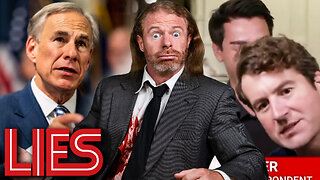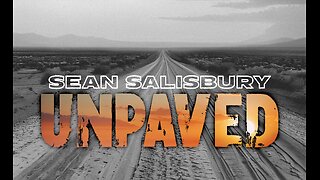Premium Only Content

The Myth of the Great Moderation: Keynes vs Greenspan | Economics 🏘️📈
The Great Moderation is a period starting from the mid-1980s until 2007 characterized by the reduction in the volatility of business cycle fluctuations in developed nations starting compared with the decades before. It is believed to be caused by institutional and structural changes, particularly in central bank policies, in the second half of the twentieth century.
During the Great Moderation, real wages and consumer prices stopped increasing and remained stable, while interest rates reversed their upward trend and started to fall. The period also saw a large increase in household debt and economic polarization, as the wealth of the rich grew substantially, while the poor and middle class went deep into debt.
And then in 2008 the economy crashed and the global finanacial sector imploded. This video shows us why.
Chapters:
00:00 Financial crisis
00:16 Historical GDP growth
00:32 Golden Age of Capitalism vs The Great Moderation
00:56 Real hourly compensation vs net productivity
01:11 Wages vs Corporate Profits
01:23 Wages vs Household Debt
01:45 US Trade Deficit / Surplus
01:57 Sectoral (financial) balances
02:23 Finance vs Manufacturing: % of domestic profits
02:35 Household Debt vs Credit Availability
02:57 Income Inequality in the US, 1910 - 2010
03:15 Income Distribution in the US; bottom 90% vs top .01%
04:56 Keynesian Economic policies and solutions
Data:
FRED | Federal Reserve Economic Data | St Louis Fed
https://fred.stlouisfed.org/
#MMT #economics #keynes #inquality #greenspan #economy
what was the great moderation, macro economics, alan greenspan, john maynard keynes, keynes vs greenspan, economic inequality, keynesian economincs, trickle down economics, monetarism, MMT, neoliberalism, deficits, economics, what is modern monetary theory, what is modern money theory, loans create deposits, federal reserve bank, the fed, fiat money, money creation, great moderation explained
-
 0:23
0:23
Data Ninja
3 years agoTax-to-GDP Ratio: Comparing Tax Systems Around the World 💰📊
971 -
 0:33
0:33
GODSFAVOR
3 years agoGreat faith
136 -
 LIVE
LIVE
StoneMountain64
2 hours agoBATTLEFIELD 6 BETA Training and Prepping
462 watching -
 1:15:15
1:15:15
Awaken With JP
2 hours agoArrest Warrants for Dems, MSNBC Sucks, and More - LIES Ep 103
12.8K10 -
 LIVE
LIVE
The HotSeat
11 minutes agoIf I Were The Devil: Part I
168 watching -
 UPCOMING
UPCOMING
The Tom Renz Show
43 minutes agoBurn Bags - Epstein Story is Back On Top (No Pun Intended)
13 -
![[Ep 721] DOJ: Grand Jury on Russiagate | Rogue TX Dems - FAFO | Sam Anthony – [your]NEWS](https://1a-1791.com/video/fww1/39/s8/1/u/i/K/8/uiK8y.0kob.1-small-Ep-721-DOJ-Grand-Jury-on-Ru.jpg) UPCOMING
UPCOMING
The Nunn Report - w/ Dan Nunn
54 minutes ago[Ep 721] DOJ: Grand Jury on Russiagate | Rogue TX Dems - FAFO | Sam Anthony – [your]NEWS
12 -
 1:58:54
1:58:54
The Charlie Kirk Show
3 hours agoThe Obamagate Grand Jury + The Mamdani/Warren Alliance | Prof. Steele, Brand | 8.5.2025
53.4K25 -
 1:20:03
1:20:03
Sean Unpaved
3 hours agoNFL Coaching Edge: Top Staffs, Rookie Head Coaches, & NFC South Breakdown
23.5K -
 LIVE
LIVE
Viss
4 hours ago🔴LIVE - Adrenaline Infused PUBG Tactics The Get Wins! - PUBG
248 watching